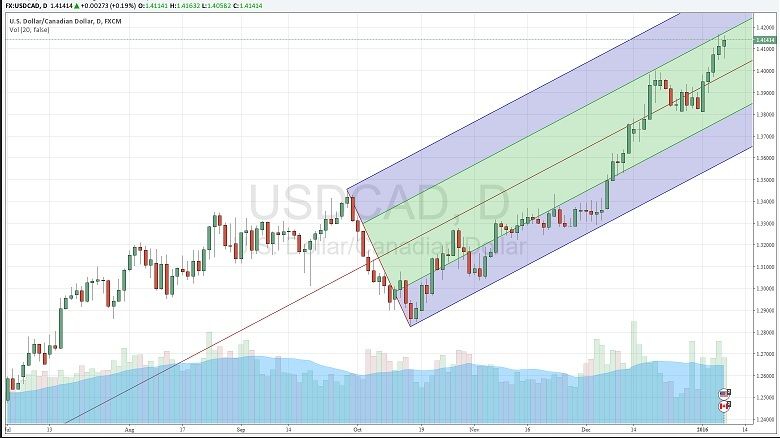Cliff Jamieson Canadian Grains Analyst
Thursday 1/7/16
The Canadian Dollar: What You See is What you Get
Canada's Bank of Canada governor Stephen Poloz reported today that there should be no surprise that the Canadian dollar is trading where it is, while there is no monetary policy or magic bullet to reach for to address what ails the Canadian economy.
The Canadian dollar lost 15.9% in 2015, the third consecutive year-over-year loss. Since 1985, this was the second time that the Canadian dollar faced a year-over-year decline for three consecutive years, the last time being 1992-1994. A further loss in 2016, already nearing 2%, would be a rare fourth consecutive year. (DTN graphic by Nick Scalise)
The Bank of Canada is content to chart a divergent monetary policy from the United States, with speculation that further rate cuts lie ahead which could weaken the loonie further while the United States could continue down the path of hiking interest rates. In a recent December address, Poloz even hinted at the notion of negative interest rates as a possible tool in the toolbox, which could weaken the loonie further.
"It is not a coincidence that the Canadian dollar is about where it was back in 2003 and 2004. Oil prices are also about where they were back then," suggested Poloz. Poloz also stated "the chart between oil and the Canadian dollar looks like a pair of train tracks." Today's low on the March electronic Canadian dollar trade reached $.7057 CAD/USD, the lowest level reached since August 2003, while today's low on the March crude oil contract reached $32.10/barrel, its lowest level since Dec 2003.
The attached chart shows the year-over-year percent change in the value of the Canadian dollar since 1985. 2015 saw the dollar decline by 15.9% against the U.S. dollar, its second-largest annual loss in this period and its third consecutive annual decline. A three-year period of weakness such as this last took place in the 1992-to-1994 period, while there has yet to be a fourth consecutive year of weakness as seen in data going back to 1985. Year-to-date losses are approaching 2% in 2016, as indicated by the green bar on the chart.
Bloomberg reports that of 148 global currencies, 118 strengthened against the Canadian dollar over the past year and 30 weakened.
Thursday 1/7/16
The Canadian Dollar: What You See is What you Get
Canada's Bank of Canada governor Stephen Poloz reported today that there should be no surprise that the Canadian dollar is trading where it is, while there is no monetary policy or magic bullet to reach for to address what ails the Canadian economy.
The Canadian dollar lost 15.9% in 2015, the third consecutive year-over-year loss. Since 1985, this was the second time that the Canadian dollar faced a year-over-year decline for three consecutive years, the last time being 1992-1994. A further loss in 2016, already nearing 2%, would be a rare fourth consecutive year. (DTN graphic by Nick Scalise)
The Bank of Canada is content to chart a divergent monetary policy from the United States, with speculation that further rate cuts lie ahead which could weaken the loonie further while the United States could continue down the path of hiking interest rates. In a recent December address, Poloz even hinted at the notion of negative interest rates as a possible tool in the toolbox, which could weaken the loonie further.
"It is not a coincidence that the Canadian dollar is about where it was back in 2003 and 2004. Oil prices are also about where they were back then," suggested Poloz. Poloz also stated "the chart between oil and the Canadian dollar looks like a pair of train tracks." Today's low on the March electronic Canadian dollar trade reached $.7057 CAD/USD, the lowest level reached since August 2003, while today's low on the March crude oil contract reached $32.10/barrel, its lowest level since Dec 2003.
The attached chart shows the year-over-year percent change in the value of the Canadian dollar since 1985. 2015 saw the dollar decline by 15.9% against the U.S. dollar, its second-largest annual loss in this period and its third consecutive annual decline. A three-year period of weakness such as this last took place in the 1992-to-1994 period, while there has yet to be a fourth consecutive year of weakness as seen in data going back to 1985. Year-to-date losses are approaching 2% in 2016, as indicated by the green bar on the chart.
Bloomberg reports that of 148 global currencies, 118 strengthened against the Canadian dollar over the past year and 30 weakened.
 /URL]
/URL]
Comment